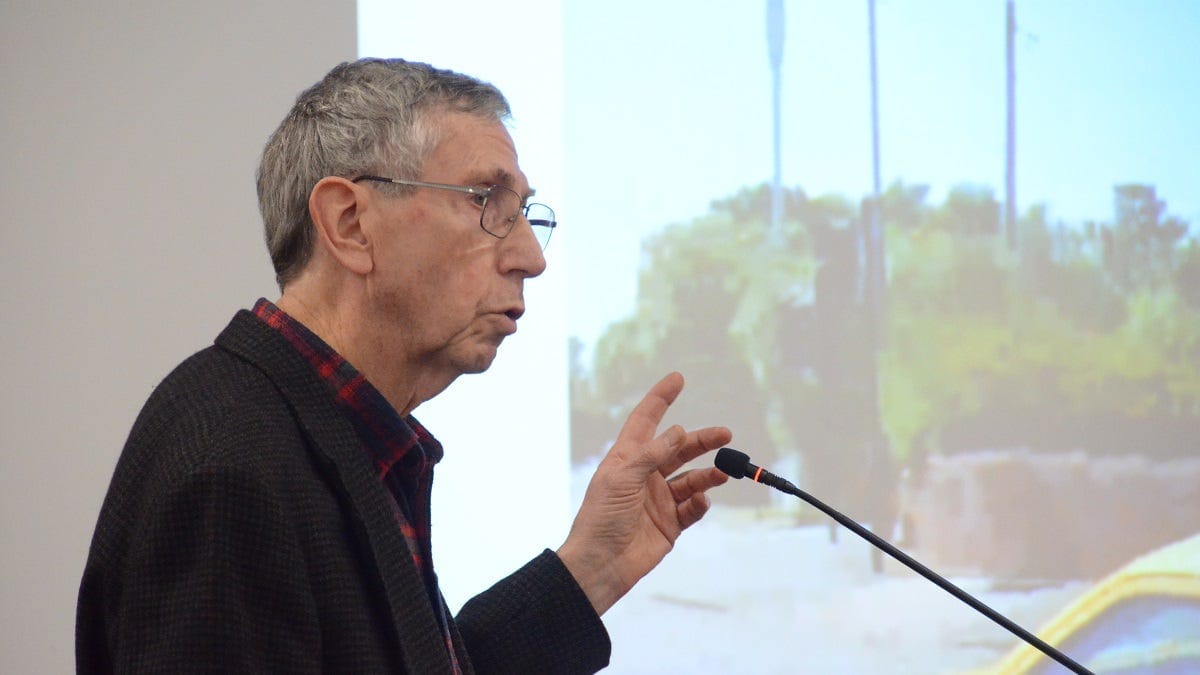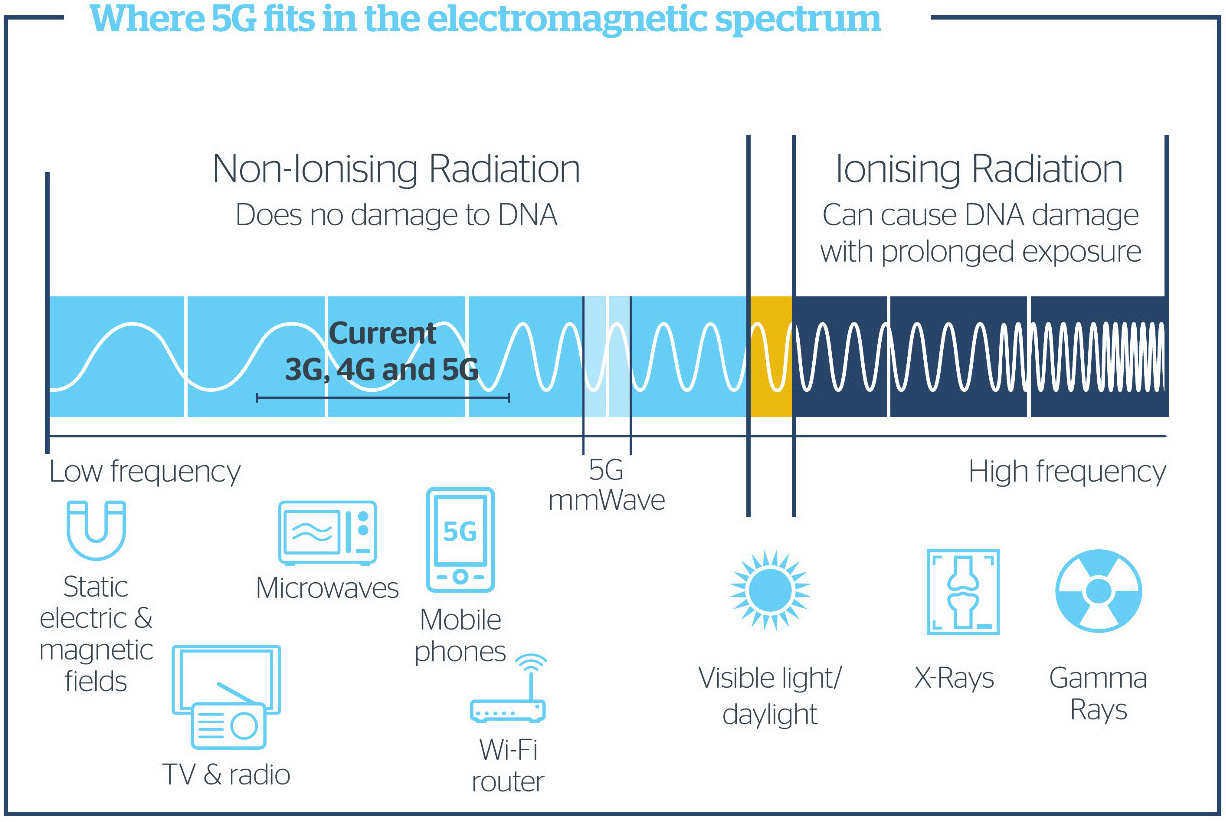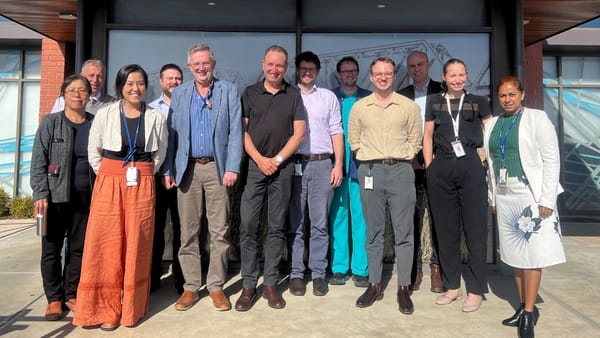Anti-5G campaigner seeks Murray Bridge council’s sympathy
The city’s councillors have been approached by a local resident with concerns about “high-frequency radiation”.

Locals support locals – that’s why this recent post is now free to read. Your support can help Murray Bridge News tell important local stories. Subscribe today.

Every month, the Murray Bridge council allocates time during its meetings for people to come and talk about the issues that matter to them.
On Monday night, it was Alan Gray’s turn.
The issue closest to his heart was the increasing number of mobile phone towers and wi-fi transmitters in the community – something he believed was a serious problem.
At least nine 5G transmitters have been installed in Murray Bridge since 2021, giving locals access to faster internet downloads and services such as telehealth.
Despite assurances to the contrary from the World Health Organisation, Australia’s chief medical officer, the Australian Radiation Protection and Nuclear Safety Agency, the Australian Communications and Media Authority and university researchers, among others, Mr Gray claimed that the technology was harmful to human health.
Locals support locals. Your support helps Murray Bridge News tell important local stories.
“You wouldn’t put your body in a microwave oven, or stand in front of a directed energy weapon, but every day we’re surrounding ourselves with dangerous radiation and it’s getting worse,” he said.
He knew of a Murray Bridge woman, he said, whose skin had become severely inflamed after her employer moved into “a new, state-of-the-art building with a lot of wireless technology”, which he blamed for her condition.
However, he said that everyone was different, and that that was why the technology had affected some people but not others.
Mr Gray also believed that small-cell 5G transmitters were able to strip foliage from trees – another theory disputed by ARPANSA.
He encouraged the council to measure radiation levels around the community, and to beware of the consequences of having allowed 5G technology into the community.
“It’s very important to stay informed and conduct our own research, ensuring we rely on reputable information,” he said.
Councillors did not ask any questions of Mr Gray.
But he received a round of applause from about 20 people in the public gallery.
More and more people have begun attending the council’s meetings since the last election, and many have expressed an interest in issues it had not previously considered, such as COVID-19 vaccine mandates and criticism of the council’s provision of electric car charging.
‘Vast amount of misinformation’ clouds 5G roll-out
In 2020, a federal inquiry found “a vast amount of misinformation” about 5G technology was circulating around Australia.
MP David Gillespie said a large number of people had written to the inquiry, suggesting that 5G was unsafe.
A subsequent analysis by a University of Canberra researcher would find that many of those people’s ideas had originated on conspiracy theory websites with links to Russian misinformation operations.
“Perhaps some confusion comes from the new spectrum bands 5G will use,” Dr Gillespie said.
“Higher frequency does not mean higher power, and … in fact, devices will operate at a lower power due to focusing the 5G signal only to where it is required and the increased number of antennae, which means that users will have less exposure than under previous generations of mobile technology.”

Then-chief medical officer Brendan Murphy issued a statement about the issue in 2020.
“5G technology is safe,” he said.
“There is no evidence telecommunication technologies, such as 5G, cause adverse health impacts.
“This position is supported by health authorities in Australia … and around the world.”
The World Health Organisation said it had not found evidence that exposure to any wireless technology causes adverse health effects, having studied the issue since 1996.
The Australian Radiation Protection and Nuclear Safety Agency said the same thing, and pointed out that that the number of Australians diagnosed with brain cancer has not increased since the introduction of mobile phones in the early 2000s.
On the contrary, both it and the Australian Communications and Media Authority said misinformation about the 5G network was rife.
An Australian Mobile Telecommunications Authority representive told the federal inquiry that an estimated 25 per cent of Australians were concerned about the health effects of the 5G roll-out, and needed to be provided with more information.
- More information about the health effects of 5G: theconversation.com/theres-no-evidence-5g-is-going-to-harm-our-health-so-lets-stop-worrying-about-it-120501
- More information about 5G misinformation: www.arpansa.gov.au
- More information about 5G transmitter locations: www.rfnsa.com.au.





